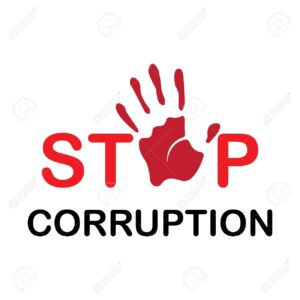Ghana’s Debt to the Population: Each Person owes $403.7, Over Twice of Monthly Income

A cause for concern? The debt per capita represents more than two times the monthly income of an average Ghanaian. One of the most pressing issues that Ghana has to deal with is its high level of public debt. Ghana is known for its rich cultural heritage, natural resources, and democratic governance. However, it also faces many challenges, such as poverty, inequality, corruption, and environmental degradation. A West African nation with a population of about 33.5 million people [World Bank Data] and 30.8 million people [Ghana Statistical Service, Population Census, 2021] debt amounted to economic hardship.
According to a report by [CEIC Data], Ghana’s government debt accounted for 70.7 % of the country’s nominal GDP in Dec 2022, compared with the ratio of 76.6 % in the previous year. This means that Ghana’s debt has decreased slightly, but it is still above the 70 % threshold that the International Monetary Fund (IMF) considers unsustainable. Ghana’s debt to GDP ratio data is updated yearly, available from Dec 2006 to Dec 2022. The data reached an all-time high of 76.6 % in Dec 2021 and a record low of 26.2 % in Dec 2006.
To put this into perspective, we can calculate how much each person in Ghana owes according to the debt and the population data. Using the formula:
Debt per capita = Population Debt to GDP ratio×Nominal GDP
We can plug in the values as follows:
Debt per capita = 33.5×106 /0.707×19.1×109
Simplifying the expression, we get:
Debt per capita = 403.7
This means that each person in Ghana owes 403.7 USD according to the debt and the population data in 2022.
However, if using GSS data, each person in Ghana owes 441.5 USD according to the debt and the population data, that the population is 30.8 million as stated. However, according to [World Bank Data], Ghana’s population in 2022 was 33.5 million people, which would result in a lower debt per capita of 403.7 USD.
This amount may not seem too high compared to some developed countries, such as the United States, where the debt per capita was 69,724 USD in 2020. However, it is important to consider the income level and living standards of the people in Ghana. According to [World Bank Data], Ghana’s gross national income (GNI) per capita was 2,220 USD in 2020, which means that the average person in Ghana earned about 185 USD per month. Therefore, the debt per capita represents more than two times the monthly income of an average Ghanaian.
Moreover, Ghana’s debt burden has serious implications for its economic growth and development. According to [IMF Data], Ghana’s real GDP growth rate was -3 % in 2020, which was the lowest since 1983. This was mainly due to the impact of the COVID-19 pandemic, which disrupted economic activities and reduced revenues from exports and tourism. The IMF projected that Ghana’s real GDP growth rate would recover to 4.7 % in 2021 and 6.1 % in 2022, but these projections are uncertain and uncertain.
One of Ghana’s main risks is its high-interest payments on its debt. According to [World Bank Data], Ghana’s interest payments on external debt amounted to 3 billion USD in 2019, which was equivalent to 18 % of its total government revenue. This means that Ghana had to spend almost one-fifth of its income on servicing its debt, leaving less resources for public spending on health, education, infrastructure, and social protection.
Another risk that Ghana faces is its vulnerability to external shocks and currency fluctuations. Since most of Ghana’s debt is denominated in foreign currencies, such as the US dollar and the euro, any depreciation of the Ghanaian cedi would increase the cost of repaying its debt. For instance, between January and December 2020, the cedi depreciated by 3.9 % against the dollar, which added more pressure on Ghana’s fiscal position.
Ghana has sought assistance from various international institutions and partners to address these challenges, such as the IMF, the World Bank, and China. In April 2020, Ghana received 1 billion USD from the IMF under the Rapid Credit Facility (RCF) program, which aimed to provide emergency financial support to low-income countries affected by the COVID-19 crisis. In June 2020, Ghana also received 315 million USD from the World Bank under the Development Policy Operation (DPO) program, which aimed to support policy reforms and strengthen fiscal management.
In addition, Ghana has also participated in several debt relief initiatives, such as the Debt Service Suspension Initiative (DSSI) launched by the G20 countries in April 2020, which allowed eligible countries to defer their debt payments to official bilateral creditors until June 2021. Ghana also applied for the Common Framework for Debt Treatments beyond the DSSI in February 2021, which offered a more comprehensive and coordinated approach to address debt sustainability issues.
However, these measures may not be enough to solve Ghana’s debt problem in the long term. Ghana may need to adopt more radical and sustainable solutions, such as restructuring its debt, increasing its domestic revenue mobilization, diversifying its economy, and improving its governance and transparency. These solutions may require political will, social consensus, and international cooperation, but they may also offer Ghana a chance to achieve its vision of becoming a prosperous and inclusive nation.
The author of this piece is Maxwell Mensah, a writer, researcher, and social commentator. You can reach him on mensahm1815@gmail.com


